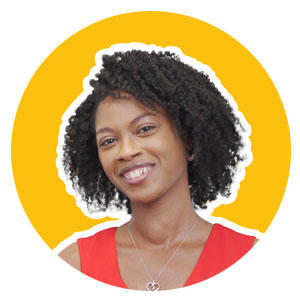
A Conversation with Bauer Researchers on Workplace Inequality Post-Pandemic
Professor Derek Avery and Associate Professor Enrica Ruggs are faculty in the Bauer College Department of Management & Leadership who study a range of workplace equality issues, including recent research exploring the role diversity places in the post-pandemic job market.
Avery and Ruggs, leaders in industrial-organizational (IO) psychology, recently discussed the potential impact of new, more flexible workplace arrangements on marginalized employees and shared strategies for embedding diversity and inclusion in an ever-evolving workplace.

Professor Derek Avery
I think it’s important for organizations to remember that there’s not a one-size-fits-all solution, that what we do for one employee may not work for another person.
Enrica Ruggs
Associate Professor of Management & Leadership

Associate Professor Enrica Ruggs
? What current workplace trends may be negatively affecting efforts to expand diversity?
Derek: The trend toward increasing flexibility in certain industries is really highlighting the fact that there isn’t that same flexibility in other industries. The industries that lack flexibility oftentimes are ones in which we tend to see overrepresentation among racial and ethnic minorities, or overrepresentation among folks who are of lower socio-economic status and income.
Enrica: Another issue is that there is also a lot of ambiguity around deciding whether people need to go back to work in the office or not. Women in particular have struggled with this during the pandemic, especially in terms of trying to find the right work/home balance.
? What strategies do you suggest to better ensure diversity and inclusion is embedded in flexible work arrangements?
Enrica: We’ve known for a long time from the research that remote workers perform very well, even out-performing people who are in the office in some instances. I think it’s important for organizations to remember that there’s not a one-size-fits-all solution, that what we do for one employee may not work for another person. Organizations really need to take the time to think about their particular situation. How can we tailor our strategies if we’re able to offer flexibility? How do we maximize this person’s work effort? When do we really need employees in the office? How can we create greater flexibility and still keep peak performance? The flexibility may look different from employee to employee, and that’s okay.
? What are some examples of how well-intentioned organizations might be falling short in this area?
Derek: Organizations have traditionally done a better job of paying attention to the evolving needs and interests of their external stakeholders, rather than their internal stakeholders. If you’re an organization and you ignore your customers, you don’t stay in business a long time. But for whatever reason, there is this belief that you can ignore your employees and everything will be okay. A number of organizations have gotten away with that for quite some time.
But just as consumer expectations and preferences can shift, so can that of employees. As employees begin to expect greater flexibility, as they begin to expect being treated with dignity and respect, employers have to step up to that. If they do not, they will consistently find themselves behind the eight ball, living reactively, trying to figure out how they’re going to fill their labor shortages and, ultimately, questioning whether or not they are going to survive.
Enrica: Another way organizations are falling short is trying to bite off more than they can chew, more than they’re really ready to do at this time. When they’re not really thinking about how diversity and equity initiatives fit into broader strategic initiatives, that is where we see gaps and holes, where you see an organization try to do a sort of one-off training and not following up, not paying attention to the attrition we see from minority employees. A better approach is to really look at some of the in-house data they have and then setting a more realistic goal. Where are we doing well, where are we doing poorly and how do we take a more holistic approach with our diversity and inclusion initiatives?
